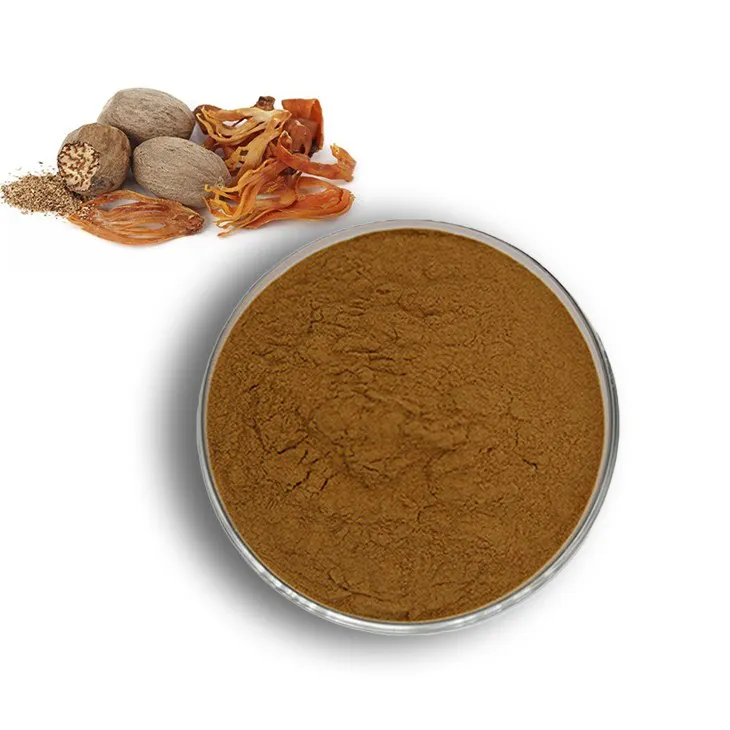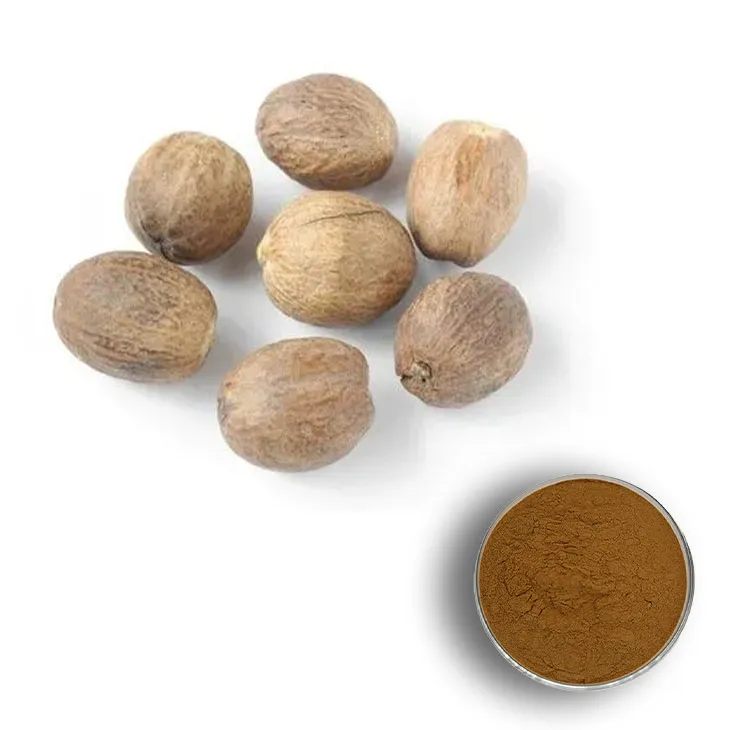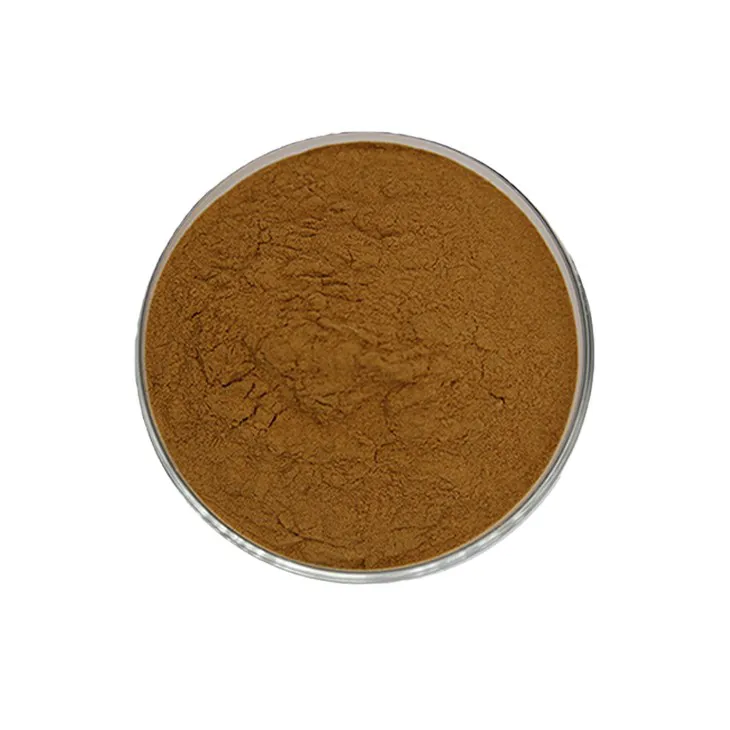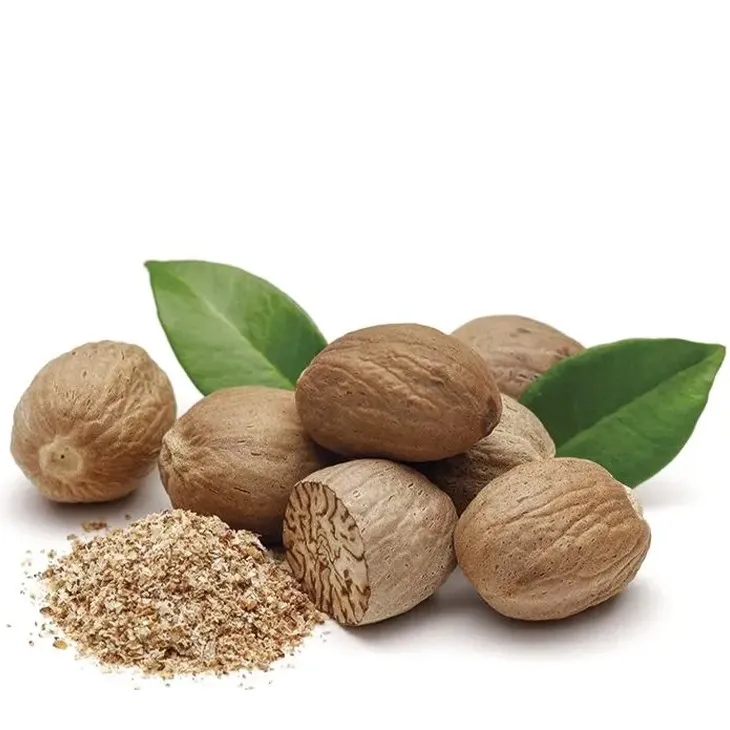- 0086-571-85302990
- sales@greenskybio.com
How to make powder with nutmeg extract?
2024-11-30

1. Introduction
Nutmeg Extract is a valuable substance with various potential applications. The process of making powder from it is not only interesting but also requires precision and knowledge. This article will explore in detail the steps and considerations involved in creating powder from Nutmeg Extract.

2. Sourcing the Right Nutmeg Extract
Quality Assurance: When it comes to sourcing nutmeg extract, quality should be the top priority. High - quality nutmeg extract is more likely to produce a satisfactory powder. Look for extracts that are sourced from reliable suppliers. These suppliers should have a good reputation in the market and follow strict quality control measures. For example, they should ensure that the nutmeg used for extraction is of good quality, free from contaminants, and properly processed.
Type of Extract: There are different types of nutmeg extracts available in the market, such as solvent - based extracts and supercritical fluid extracts. Each type may have different properties and characteristics. Solvent - based extracts may contain traces of the solvent used, which could affect the final powder product. On the other hand, supercritical fluid extracts are often considered cleaner and may retain more of the natural properties of nutmeg. It is important to understand the differences between these types and choose the one that is most suitable for your powder - making purpose.

3. Understanding the Chemical Composition
Active Compounds: Nutmeg extract contains a variety of active compounds, such as myristicin, elemicin, and safrole. These compounds play a crucial role in determining the properties of the extract and, subsequently, the powder made from it. For example, myristicin has antioxidant and antimicrobial properties. Understanding the functions of these active compounds can help in predicting how the extract will behave during the powder - making process.
Volatility: Some of the components in nutmeg extract are volatile. This means that they can easily evaporate under certain conditions. During the powder - making process, if not properly controlled, the loss of these volatile components can occur. For instance, excessive heat or improper drying methods can lead to the evaporation of volatile oils present in the extract. This can change the composition and properties of the resulting powder.
Solubility: The solubility of the extract in different solvents is also an important aspect. If you plan to use a solvent - based method to make the powder, knowledge of the extract's solubility in various solvents is essential. For example, some components of the nutmeg extract may be more soluble in ethanol than in water. This information can be used to optimize the extraction and powder - forming processes.

4. Thermal Treatment Considerations
Low - Temperature Processing: When it comes to thermal treatment, it is often advisable to use low - temperature processes as much as possible. High temperatures can damage the active compounds present in the nutmeg extract. For example, if the extract is heated above a certain temperature, the myristicin content may decrease due to degradation. Low - temperature drying methods such as freeze - drying or vacuum - drying can be considered. These methods can help in removing moisture from the extract while minimizing the damage to the active compounds.
Controlled Heating: If some level of heating is necessary, it should be carefully controlled. This can be achieved by using precise temperature - control equipment. For instance, in a laboratory setting, a thermostatic oven with an accuracy of ± 1°C can be used. By controlling the heating temperature and duration, the quality of the powder can be maintained. For example, if you are drying the extract to form a powder, a slow and controlled heating process can ensure that the powder is formed evenly without over - drying or under - drying.
Monitoring the Process: During thermal treatment, continuous monitoring is essential. This can be done by using various analytical techniques. For example, infrared spectroscopy can be used to monitor the changes in the chemical structure of the extract during heating. By monitoring the process, any signs of degradation or unwanted chemical changes can be detected early, and appropriate actions can be taken to correct the process.

5. Processing Steps for Powder Formation
Pre - treatment: Before the actual powder - forming process, pre - treatment of the nutmeg extract may be required. This can include steps such as filtering to remove any impurities or insolubles. If the extract has a high viscosity, dilution with an appropriate solvent may be necessary. For example, if the extract is too thick to be processed further, adding a small amount of ethanol can reduce its viscosity and make it more suitable for powder - forming operations.
Drying: Drying is a crucial step in powder formation. As mentioned earlier, choosing the right drying method is important. In addition to low - temperature drying methods, spray - drying can also be an option. Spray - drying involves spraying the extract into a hot air stream, where the moisture is rapidly evaporated, leaving behind a powder. However, this method requires careful control of the parameters such as inlet air temperature, feed rate, and atomizer speed to ensure the quality of the resulting powder.
Grinding: Once the extract is dried, it may need to be ground into a fine powder. This can be done using a mortar and pestle for small - scale production or a mechanical grinder for larger quantities. The grinding process should be carried out carefully to avoid over - grinding, which can cause heat generation and potentially damage the powder. For example, if using a mechanical grinder, it is advisable to use short bursts of grinding rather than continuous grinding to prevent overheating.
6. Packaging the Powder
Material Selection: The choice of packaging material is crucial for protecting the powder. Light - resistant, moisture - proof, and oxygen - barrier materials are preferred. For example, aluminum - laminated pouches can be used as they provide excellent protection against light, moisture, and oxygen. These properties are important because exposure to light, moisture, or oxygen can cause degradation of the powder over time.
Packaging Environment: The packaging should be carried out in a clean and dry environment. This helps to prevent contamination of the powder during the packaging process. For instance, if the packaging area has a high humidity level, moisture can be absorbed by the powder, which can affect its quality and shelf - life.
Labeling: Proper labeling of the powder package is also important. The label should include information such as the name of the product (nutmeg extract powder), the batch number, the date of production, and any relevant usage instructions or warnings. This information is useful for traceability and for ensuring the correct use of the powder by the end - user.
7. Quality Control and Testing
Physical Properties: Quality control starts with the assessment of the powder's physical properties. This includes parameters such as particle size distribution, powder flowability, and bulk density. For example, a narrow particle size distribution indicates a more uniform powder, which may have better performance in certain applications. Powder flowability is important for processes such as mixing and dosing, and bulk density can affect the packaging and storage requirements.
Chemical Analysis: Chemical analysis of the powder is also necessary. This can involve techniques such as high - performance liquid chromatography (HPLC) to determine the content of active compounds. For example, HPLC can be used to measure the myristicin content in the nutmeg extract powder to ensure that it meets the expected quality standards. Other chemical tests may include the detection of contaminants or residual solvents.
Microbial Testing: Since nutmeg extract powder may be used in various applications, including in the food and pharmaceutical industries, microbial testing is crucial. This includes testing for the presence of bacteria, fungi, and yeasts. Microbial contamination can pose a risk to the safety and quality of the product. For example, if the powder is to be used in a food product, high levels of microbial contamination can cause spoilage or pose a health hazard to consumers.
8. Conclusion
Making powder from nutmeg extract is a complex process that involves multiple steps and considerations. From sourcing the right extract to understanding its chemical composition, carefully controlling thermal treatment, following proper processing steps for powder formation, packaging the powder correctly, and conducting quality control and testing, each aspect plays a vital role in ensuring the production of a high - quality nutmeg extract powder. By paying attention to these details, one can produce a powder that is not only of good quality but also suitable for various applications.
FAQ:
Q1: What are the key factors to consider when sourcing nutmeg extract for powder making?
When sourcing nutmeg extract for powder making, it is crucial to consider factors such as purity, origin, and quality. High - purity extract is often more suitable for powder production. The origin of the extract can also affect its properties, for example, nutmeg from different regions may have slightly different chemical compositions. Additionally, a reliable source with good quality control is essential to ensure a consistent product for powder making.
Q2: How does the chemical composition of nutmeg extract impact the powder - making process?
The chemical composition of nutmeg extract can have a significant impact on the powder - making process. For instance, certain compounds may be more or less stable under different processing conditions. If the extract contains volatile components, they need to be carefully managed during the process. Some compounds may also affect the texture and flowability of the resulting powder. Understanding the chemical makeup helps in determining the appropriate processing methods, such as the right temperature and drying techniques, to ensure a high - quality powder.
Q3: What is the importance of proper thermal treatment during the production of nutmeg extract powder?
Proper thermal treatment during the production of nutmeg extract powder is very important. It can help in removing moisture effectively, which is crucial for powder formation. However, it must be carefully regulated. If the temperature is too high, it may damage the active compounds in the extract. On the other hand, if the temperature is too low, the drying process may be incomplete, resulting in a powder with a higher moisture content, which can affect its stability and shelf - life.
Q4: How should the nutmeg extract powder be packaged?
The nutmeg extract powder should be packaged in a way that protects it from external factors. Using air - tight and moisture - proof packaging is ideal. This can prevent exposure to air, moisture, and light, which can degrade the powder over time. Packaging materials such as laminated foil or high - quality plastic containers are often suitable. Additionally, proper labeling should be included to provide information about the product, such as its ingredients, usage instructions, and expiration date.
Q5: What are the potential challenges in making powder from nutmeg extract?
There are several potential challenges in making powder from nutmeg extract. One challenge is maintaining the integrity of the active compounds during processing, especially with thermal treatment. Another is achieving a consistent particle size and texture in the powder. Controlling the moisture content precisely can also be difficult. Additionally, ensuring the powder has good flowability and does not clump during storage or handling can be a challenge.
Related literature
- Studies on the Chemical Properties of Nutmeg Extract and Their Impact on Powder Formation"
- "Best Practices in Thermal Treatment for Nutmeg Extract Powder Production"
- "Packaging Solutions for Nutmeg Extract - Based Powders"
- ▶ Hesperidin
- ▶ citrus bioflavonoids
- ▶ plant extract
- ▶ lycopene
- ▶ Diosmin
- ▶ Grape seed extract
- ▶ Sea buckthorn Juice Powder
- ▶ Beetroot powder
- ▶ Hops Extract
- ▶ Artichoke Extract
- ▶ Reishi mushroom extract
- ▶ Astaxanthin
- ▶ Green Tea Extract
- ▶ Curcumin Extract
- ▶ Horse Chestnut Extract
- ▶ Other Problems
- ▶ Boswellia Serrata Extract
- ▶ Resveratrol Extract
- ▶ Marigold Extract
- ▶ Grape Leaf Extract
- ▶ blog3
- ▶ blog4
-
High - quality lily extract products.
2024-11-30
-
Organic Clove Powder Factory.
2024-11-30
-
Chinese suppliers of chastity berry extract.
2024-11-30
-
100% Organic Aged Garlic Extract.
2024-11-30
-
Chinese Chastity Berry Extract Factory.
2024-11-30
-
Mango flavored powder
2024-11-30
-
Fig Extract
2024-11-30
-
Motherwort Extract
2024-11-30
-
Oat Straw Extract Powder
2024-11-30
-
Maca Extract
2024-11-30
-
Hawthorn powder
2024-11-30
-
Coconut Water Powder
2024-11-30
-
Eyebright Extract
2024-11-30
-
Yellow Pine Extract
2024-11-30
-
Lemon Juice Powder
2024-11-30





















